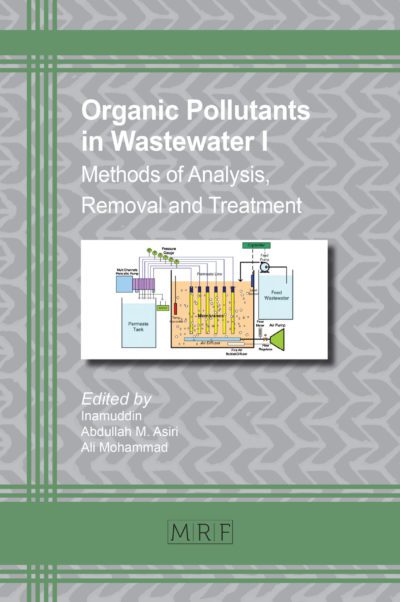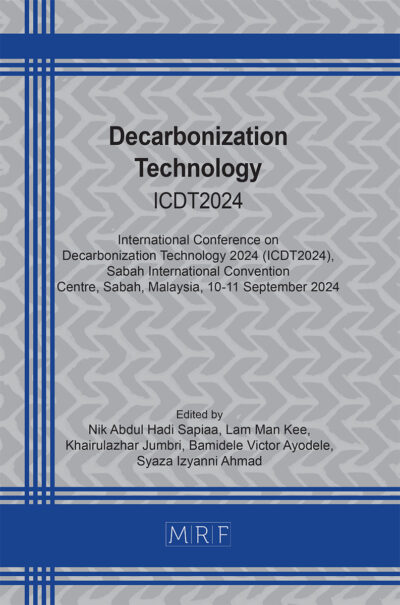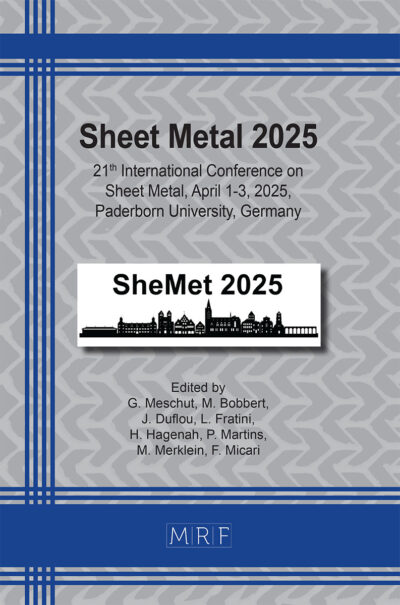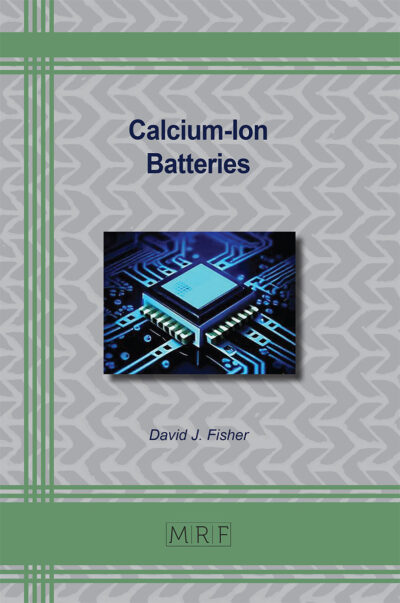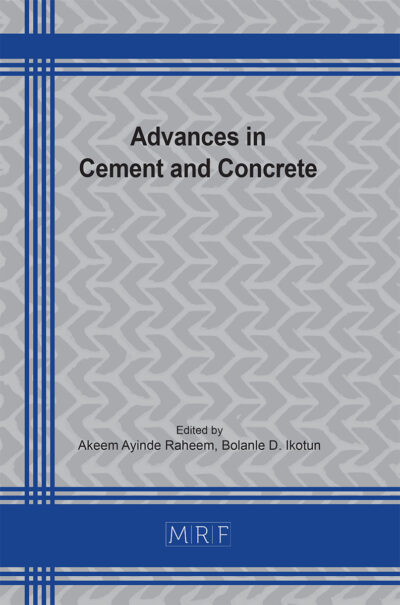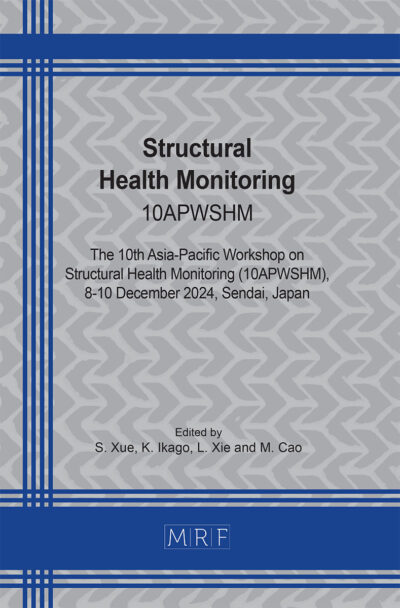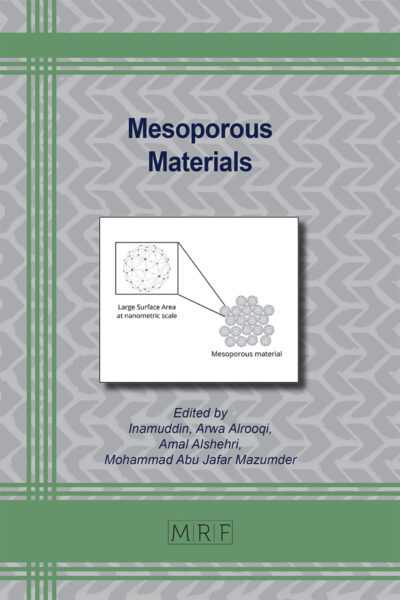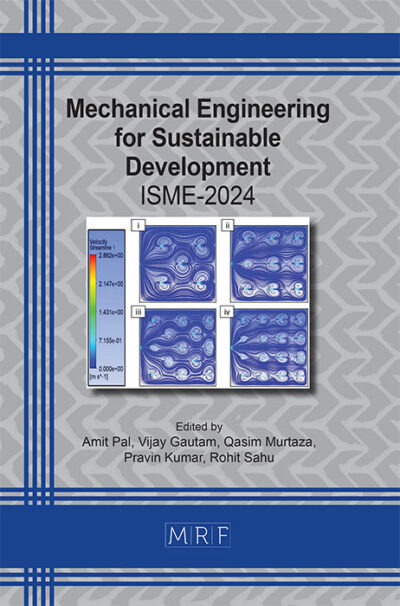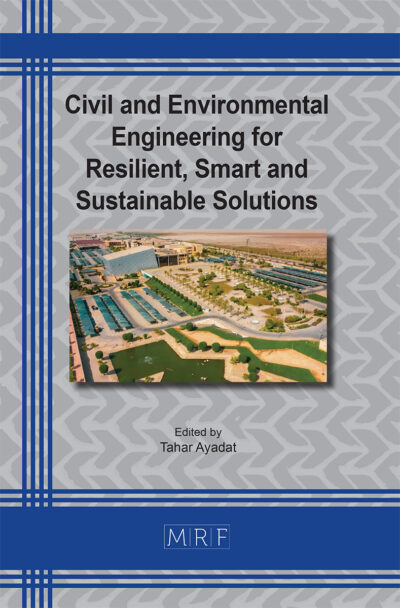Kinetic study of biomass activated carbon impregnated with copper (AC/Cu) as a photocatalyst in degradation of ammoniacal nitrogen
SELVARAJ Hemaraj, YAKUB Ibrahim, MOHAMAD SAID Khairul Anwar, MOHAMED AMIN Mohamed Afizal, AHMAD ZAUZI Nur Syuhada, BAINI Rubiyah
Abstract. Generation of wastewater including leachate that contains ammoniacal nitrogen (AN) is increasing and requires urgent solution. The current status of the photocatalyst development for the degradation of this pollutant is promising but further improvement is desired. This study explored the possibility of using biomass activated carbon as a catalyst support to provide more surface area. Activated carbon from coconut shell was used to support 30 wt% copper catalyst in a wet impregnation procedure for the catalyst synthesis. Characterization of the photocatalyst (AC/Cu) was performed using scanning electron microscopy and energy dispersive X-ray (SEM-EDX), BET surface area analysis, thermogravimetric and differential thermal analysis (TG/DTA), and Fourier-Transform Infra-Red spectroscopy (FTIR). It was revealed that the catalyst has BET surface area of 430 m2/g, 0.254 cc/g total pore volume, 60% carbon content, and surface functional groups that include nitriles, alkenes and aromatics at low intensity. The batch experiment on AN removal showed the best catalyst dosage in this system is 0.5 g while 90 spm shaker speed resulted in the highest AN removal. The initial AN concentration adversely affected the performance of the catalyst where the higher the concentration, the lower the removal. Between pseudo-first and pseudo-second order kinetic models, the latter exhibited the best fit to the experimental data explaining the mechanism of AN removal is attributable to chemisorption. The photocatalyst supported over biomass carbon has larger BET surface area compared to the conventional titania-based photocatalyst and the system could be further improved to cater higher concentration of AN for practical applications.
Keywords
Biomass, Activated Carbon, Catalyst, Environment, Ammoniacal Nitrogen
Published online 4/25/2025, 9 pages
Copyright © 2025 by the author(s)
Published under license by Materials Research Forum LLC., Millersville PA, USA
Citation: SELVARAJ Hemaraj, YAKUB Ibrahim, MOHAMAD SAID Khairul Anwar, MOHAMED AMIN Mohamed Afizal, AHMAD ZAUZI Nur Syuhada, BAINI Rubiyah, Kinetic study of biomass activated carbon impregnated with copper (AC/Cu) as a photocatalyst in degradation of ammoniacal nitrogen, Materials Research Proceedings, Vol. 53, pp 642-650, 2025
DOI: https://doi.org/10.21741/9781644903575-65
The article was published as article 65 of the book Decarbonization Technology
![]() Content from this work may be used under the terms of the Creative Commons Attribution 3.0 license. Any further distribution of this work must maintain attribution to the author(s) and the title of the work, journal citation and DOI.
Content from this work may be used under the terms of the Creative Commons Attribution 3.0 license. Any further distribution of this work must maintain attribution to the author(s) and the title of the work, journal citation and DOI.
References
[1] C. P. C. Bong, W. S. Ho, H. Hashim, et al., Review on the renewable energy and solid waste management policies towards biogas development in Malaysia. Renewable and Sustainable Energy Reviews 70 (2017) 988-998.. https://doi.org/s://doi.org/10.1016/j.rser.2016.12.004
[2] H. A. Aziz & S. F. Ramli, Recent development in sanitary landfilling and landfill leachate treatment in Malaysia, Int. J. Environ. Eng. 9 (2018), 201-229.. https://doi.org/s://doi.org/10.1504/IJEE.2018.097517
[3] K. Lin, Y. Zhu, Y. Zhang & H. Lin, Determination of ammonia nitrogen in natural waters: Recent advances and applications, Trends in Environ. Anal. Chem. 24 (2019) 1-13.. https://doi.org/s://doi.org/10.1016/j.teac.2019.e00073
[4] X. Jiang, H. Xia, L. Zhang, et al., Synthesis of copper- loaded activated carbon for enhancing the photocatalytic removal of methylene blue, J. Mol. Liq. (2018) 1-27.. https://doi.org/s://doi.org/10.1016/j.molliq.2018.09.087
[5] J. Moma & J. Baloyi, Modified titanium dioxide for photocatalytic applications, in K. Akhtar & S. Bahadar, Photocatalysts – Applications and Attributes, Intechopen Limited, London, 2018, pp. 37-56.. https://doi.org/s://doi.org/10.5772/intechopen.79374
[6] Y. Zhang, Q. Wang, Y. Zongsheng, G. Ma & Y. Zheng, Visible-light-mediated copper photocatalysis for organic syntheses, Beilstein J. Org. Chem. 17 (2021) 2520-2542.. https://doi.org/s://doi.org/10.3762/bjoc.17.169
[7] S. B. Barrabas, R. Baini, N. M. Sutan, et al., HC-SCR: NOx reduction using Mn and Cu catalysts impregnated in coconut and palm kernel shell activated carbon, MATEC Web Conf. 87 (2017) 1-6.. https://doi.org/s://doi.org/10.1051/matecconf/20178703004
[8] C. P. M. de Oliveira, A. L. A. Lage, D. C. S. Martins, et al., High surface area TiO2 nanoparticles: impact of carboxylporphyrin sensitizers in the photocatalytic activity, Surfaces & Interfaces 21 (2020) 1-8.. https://doi.org/s://doi.org/10.1016/j.surfin.2020.100774
[9] C. C. de Souza, L. Z. M. de Souza, M. Yilmaz, et al., Activated carbon of Coriandrum sativum for adsorption of methylene blue: Equilibrium and kinetic modeling, J. Cleaner Mat. 3 (2022) 1-10.. https://doi.org/s://doi.org/10.1016/j.clema.2022.100052
[10] I. Yakub & J. McGregor, Catalytic reduction of nitric oxide with hydrogen using carbon‑supported d‑metal catalysts, Waste & Biomass Valor. 13 (2022) 1665-1680.. https://doi.org/s://doi.org/10.1007/s12649-021-01623-7
[11] M. A. El-Nemr, A. El-Nemr, M. A. Hassaan, et al., Microporous activated carbon from Pisum sativum Pods using various activation methods and tested for adsorption of acid orange 7 dye from water, Mol. 27 (2022) 1-37.. https://doi.org/s://doi.org/10.3390/molecules27154840



